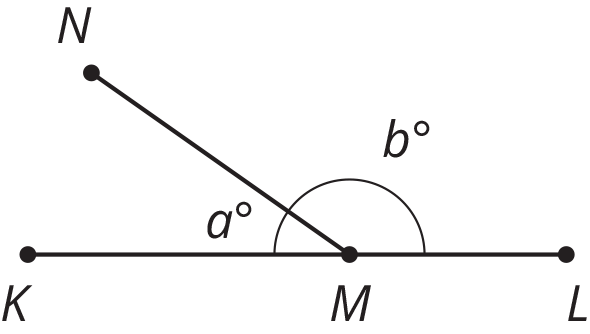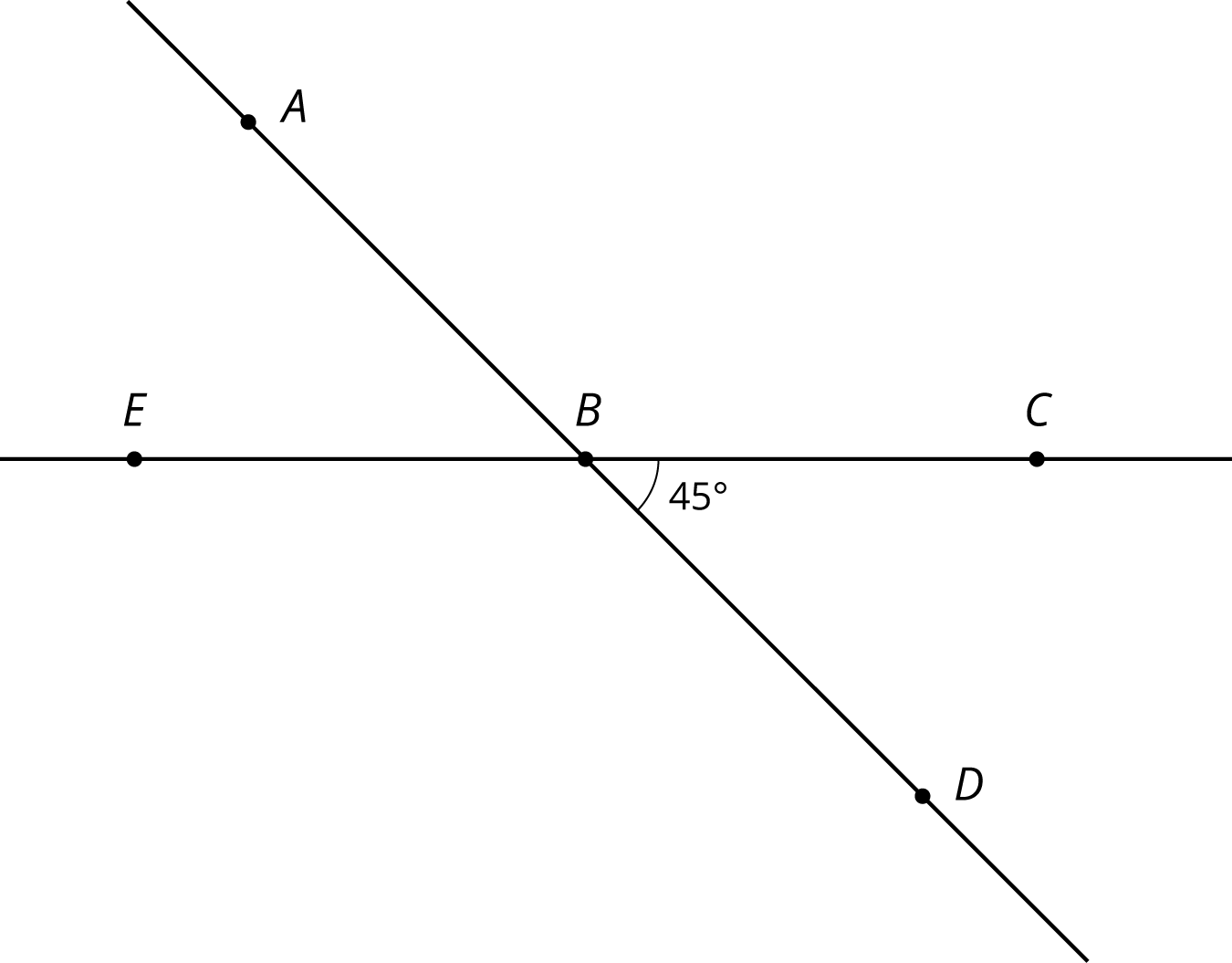Lesson 12
Alternate Interior Angles
Let’s explore why some angles are always equal.
Problem 1
Segments \(AB\), \(EF\), and \(CD\) intersect at point \(C\), and angle \(ACD\) is a right angle. Find the value of \(g\).

Problem 2
\(M\) is a point on line segment \(KL\). \(NM\) is a line segment. Select all the equations that represent the relationship between the measures of the angles in the figure.

A:
\(a=b\)
B:
\(a+b=90\)
C:
\(b=90-a\)
D:
\(a+b=180\)
E:
\(180-a=b\)
F:
\(180=b-a\)
Problem 3
Use the diagram to find the measure of each angle.
- \(m\angle ABC\)
- \(m\angle EBD\)
- \(m\angle ABE\)

Problem 4
Lines \(k\) and \(\ell\) are parallel, and the measure of angle \(ABC\) is 19 degrees.

- Explain why the measure of angle \(ECF\) is 19 degrees. If you get stuck, consider translating line \(\ell\) by moving \(B\) to \(C\).
- What is the measure of angle \(BCD\)? Explain.
Problem 5
The diagram shows three lines with some marked angle measures.

Find the missing angle measures marked with question marks.
Problem 6
Lines \(s\) and \(t\) are parallel. Find the value of \(x\).
